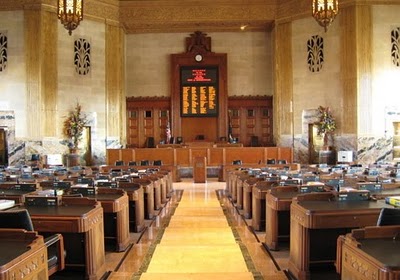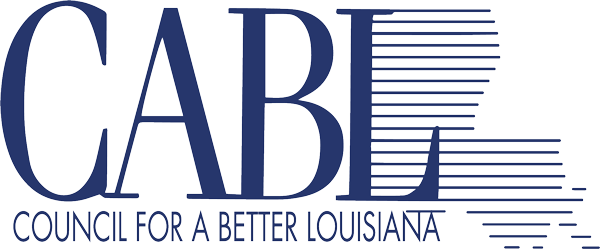
Louisiana Lawmakers opened their marathon series of legislative sessions on Valentine’s Day. Now, approaching the Fourth of July, they have finally gone home.
Louisiana Lawmakers opened their marathon series of legislative sessions on Valentine’s Day. Now, approaching the Fourth of July, they have finally gone home.
These sessions have been difficult by any measure, and not just for legislators. Businesses, taxpaying citizens, students and parents worried about TOPS and higher education, providers and consumers of health care and social services – all had a greater than usual stake in the goings on at the Capitol this year.
It turned out to be the nightmare scenario that everyone knew was coming, where chronic budget shortfalls finally collided with the reality of a revenue base that was insufficient to fund the state’s basic needs. John Bel Edwards happened to be the governor who had to preside over it, but the truth is, whoever had been elected would have inherited the same mess with the same limited options to address the many years of fiscal neglect.
So what’s the takeaway from more than four months of non-stop legislating? Probably that we have plugged all of the budget holes in the ship of state that lawmakers had the appetite to address and now it’s time to settle in with Louisiana’s version of the new normal. The budget remains in a precarious state of balance, but at least there are real revenues that support that balance for now. For the first time, in a long time, we now know the means that we are going to have to live within. That in itself is an accomplishment.
The Budget
These sessions have told us a number of things about our state budget. One is that we can now see much more clearly how structurally deficient it really was. Certainly, low oil prices and their ripple effects have exacerbated that deficit, but the bad fiscal policies of the past have now been more clearly exposed. That’s a good thing.
Another thing these sessions reveal is that this has not been a “Chicken Little” tale. The sky really was falling. If you don’t believe it, look no further than TOPS. No Legislature before has ever cut TOPS. No
Legislature before has even contemplated that possibility. But this year the Legislature did reduce TOPS funding by a whopping 30-percent. That basically says it all.
Lawmakers also reduced public school funding from the prior year, which they have assiduously avoided in years past, while also cutting aid to private schools and vouchers. Those are things they just don’t do unless the fiscal constraints are real.
Finally, it’s important to note that all the budget wrangling that occurred over the last few days was largely among areas of the budget that most would identify as high priorities – K-12 education, higher education, TOPS, medical schools and hospitals. In the old days they managed to pull money from seemingly thin air to rescue those types of things. Not so this year. This time the priorities of various factions of the Legislature collided in a very public way. Dollars were arranged and rearranged and one priority was funded at the expense of another. But at the end of the day, the silver bullet never materialized. It just wasn’t there.
The Revenues
For a Legislature like Louisiana’s chock full of legitimate fiscal conservatives, they ended up raising a lot of money. In the two special sessions alone the total is in the neighborhood of $1.5 billion spread across individuals and businesses alike. The largest change in the second special session impacting individuals was a reduction in a tax credit Louisiana homeowners receive on an assessment they pay to the state-run Citizens Property Insurance Company. It drops from a credit of 72-percent of the assessment to 25-percent.
The largest increase overall was a $157 million boost in the tax on insurance premiums paid by health maintenance organizations in the state. That, however, was part of a broadly supported deal to bring more federal health care dollars into the state and shouldn’t impact most consumers. Other than that the other major changes primarily affect businesses and were heavily negotiated in ways that didn’t really garner their support, but did seem to soften their opposition. The final total of revenues raised this session: about $263 million.
That, of course, is far short of the $600 million the administration said it needed to balance the budget without major cuts. That means for those who wanted to see further spending reductions, they’re coming. They will include that cut to TOPS of close to $90 million, reductions in funding to K-12 public education, only partial funding for medical schools, funding losses for corrections, and a host of other cuts spread across almost all state agencies. In an unexpected departure from the norm, higher education managed to avoid the budget axe this year.
All that leaves the budget in balance for now, but it’s a tenuous balance. For one thing, it’s unclear how much revenue the state will lose in the cleanup of unintended sales tax consequences left over from the first special session. A bigger issue, though, is the prospect raised by one of the state’s leading economists that corporate income taxes for the current year could fall as much as $200 million short of projections. As tight as this budget is, that could cause serious problems if it materializes.
What Comes Next?
The only thing certain about where we go from here is the fact that the discussion about taxes isn’t over. That’s because most of the taxes lawmakers have raised and most of the tax credits they’ve trimmed have expiration dates on them in 2018. That means that the bulk of the new revenue they are bringing in now will go away without further legislative action.
What the sessions this year have shown is that those revenues were, in fact, needed and they will somehow need to be replaced. The hope is that between now and then some sound spending and tax restructuring plans will emerge from the special legislative task force charged with delivering a long-term fiscal plan. If lawmakers enact the group’s recommendations in 2017 and have them ready to go when the financial cliff comes in 2018, we might actually be on our way to having more sustainable revenues raised through a tax structure that is simpler, fairer and more competitive. At least that’s the hope.
Summary
If nothing else, the 2016 legislative sessions have blown the cover off of the state’s spending and budgeting practices over the last several years and shined a bright light on a way of doing business that was clearly irresponsible. That’s not really a surprise, since everyone knew the day of reckoning was coming, but it was needed nonetheless. In the process it forced a Legislature that is still fiscally conservative to confront the issues of how much we pay in taxes and how much we spend on programs and balance them with the level of services they believe the state needs to provide.
There will be differing opinions about how well they succeeded, but this time lawmakers didn’t hide from it. They made a decision to raise about $1.5 billion in new revenues. They acknowledged it wasn’t enough to fully support all the things they believe are important. They cut spending by as much as they realistically felt they could. And they sent the message that for the time being, these are the means the state is going to have to live within.
Again, many on both sides will find fault with their actions for one reason or another. That’s to be expected. But they made their decision and now it’s up to state leaders to manage through it. Clearly, there’s still plenty of uncertainty ahead and ultimately the job of fixing our tax and spending structure remains unfinished.
But our spending and revenue bases have now been recalibrated and ostensibly the chronic gap between “money in” and “money out” has finally been closed. We’ll find out soon enough if that is in fact the case, but that certainly has to be the hope.
Louisiana has spent too many years, mired in fiscal distractions and in doing so has lost its focus. We need to get that back. Certainly challenges remain, but it would be nice to think that instead of being constantly buried in our budget woes we might actually have the opportunity to turn our attention to more productive things – like plotting a better future for our state.
